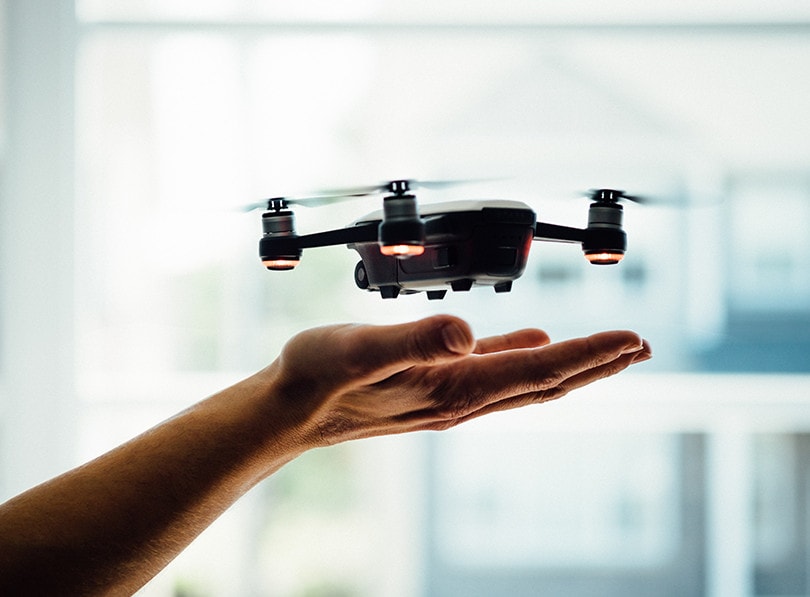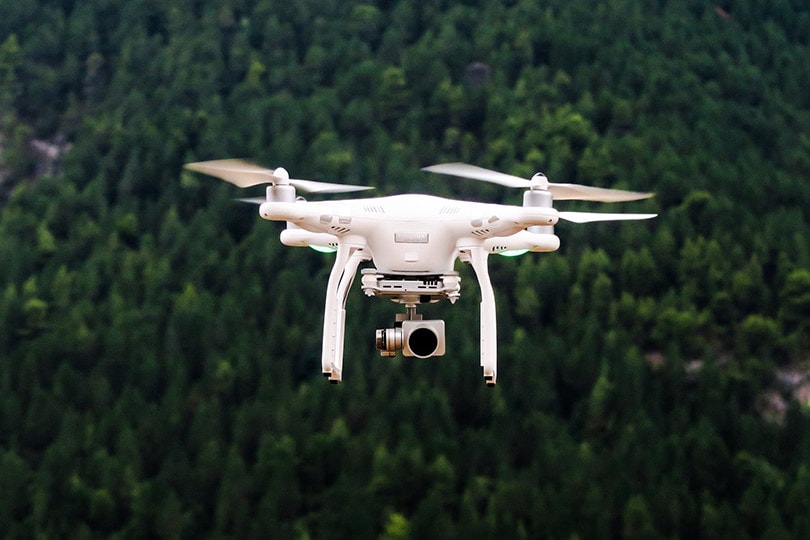What Is Headless Mode on a Drone? What You Need to Know!
Last Updated on

For many new drone users, it can be difficult to know the drone’s orientation. Headless mode, which goes by different names based on the model, makes it a bit easier to keep your orientation on track when looking at your drone from far away.
That being said, using headless mode isn’t always the easiest solution. Instead, there are many factors to consider when using headless mode. Keep reading to learn what headless mode is on a drone and how it can help you fly your drone like a pro.

What Is Headless Mode?
In order to control a drone, you have to control the aircraft based on its orientation. Most drones have a symmetrical design, which means it can be challenging to know which way the drone is facing. For experienced drone users, this symmetry isn’t difficult to navigate, but it takes a long learning period for beginners to get the hang of it.
To help this issue, manufacturers have historically used different colored LED lights on the front side of the drone. When up close, these lights can help you orient the drone. However, these lights aren’t much help from far away since they are hard to see. That is why manufacturers have developed headless mode.
Headless mode essentially allows the drone to remember what orientation it took off in. No matter what direction the drone is facing, the drone will follow your commands based on the way you are facing. In other words, you don’t have to know the orientation of the drone to control it.

When Is the Best Time to Use Headless Mode?
Headless mode certainly is advantageous, especially to new flyers. However, it’s important to note that this mode is not ideal for all scenarios or uses. If you are confused about the orientation of your drone, that is a good time to use headless mode. Headless mode will eliminate the issue of determining the drone’s orientation before you begin controlling it.
The Worst Time to Use Headless Mode
Headless mode doesn’t work in all scenarios. If you are flying in first-person view (FPV) mode, which is the most frequent mode, headless mode doesn’t often work. If you intend to take pictures with your drone, only learning how to fly in headless mode can be detrimental. You won’t learn how to orientate the drone, which means you won’t be able to fly the drone in FPV mode.
What this means is that headless mode is great for when you just want to have fun with your drone and don’t care about flying in FPV mode. As a beginner, it’s great to learn how to fly both so that you have as many options as possible.
Keep in mind that headless mode is subject to electromagnetic interference. If you’re flying near metallic towers, your headless mode may be affected.
Should You Use Headless Mode?
All this information boils down to one question: should you use headless mode? Although headless mode certainly is convenient if you are confused by orientation, most drone flyers need to learn how to orient the drone themselves. That way, you will be able to use FPV mode when needed.
If you are having a lot of trouble with your drone and keep crashing as a result, it’s a good idea to try headless mode. The headless mode can help you to get the hang of flying the drone before upgrading to more difficult terrains. However, try to learn how to fly your drone without headless mode as well. Only being able to fly the drone in both modes will allow you get the most use from it.

Conclusion
Headless mode essentially allows your drone to remember the position it took off in. As a result, you get to control the drone based on your position, not the drone’s position. This makes it much easier to control the drone when flying.
Although headless mode is great for beginners, it cannot be used for FPV mode, which is the mode mostly needed for drone flying purposes. For this reason, you want to learn how to fly the drone not in headless mode as well. Headless mode might be a great way to start, but you can upgrade your skills so that you can fly your drone in many ways.
Featured Image Credit: Dose Media, Shutterstock
About the Author Robert Sparks
Robert’s obsession with all things optical started early in life, when his optician father would bring home prototypes for Robert to play with. Nowadays, Robert is dedicated to helping others find the right optics for their needs. His hobbies include astronomy, astrophysics, and model building. Originally from Newark, NJ, he resides in Santa Fe, New Mexico, where the nighttime skies are filled with glittering stars.
Related Articles:
What Is the Best Binocular Magnification for Hunting? Optical Features Explained
How to Clean a Refractor Telescope: Step-by-Step Guide
How to Clean a Telescope Eyepiece: Step-by-Step Guide
How to Clean a Rifle Scope: 8 Expert Tips
Monocular vs Telescope: Differences Explained (With Pictures)
What Is a Monocular Used For? 8 Common Functions
How to Clean a Telescope Mirror: 8 Expert Tips
Brightfield vs Phase Contrast Microscopy: The Differences Explained
